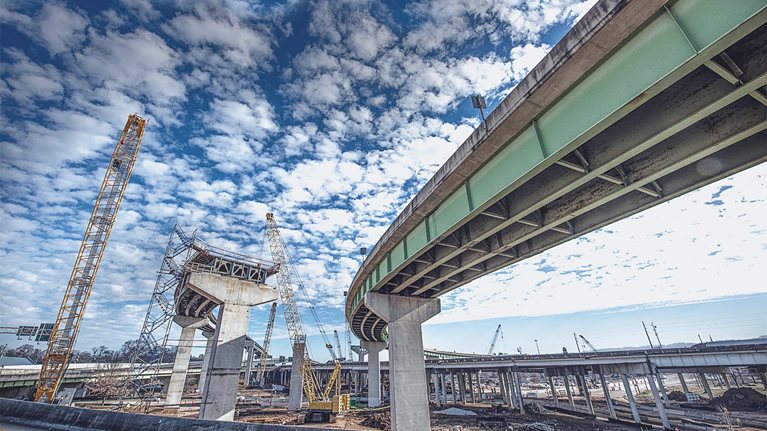Infrastructure—for example, transportation, power, water, and telecom systems—underpins economic activity and catalyzes growth and development. The world spends more than $2.5 trillion a year on infrastructure, but $3.7 trillion a year will be needed through 2035 just to keep pace with projected GDP growth.1 National, state, and local governments are devoting increased amounts of capital to meet these needs, and for good reason. The McKinsey Global Institute estimates that infrastructure has a socioeconomic rate of return around 20 percent. In other words, $1 of infrastructure investment can raise GDP by 20 cents in the long run.
Gains from infrastructure are fully realized, however, only when projects generate tangible public benefits. Unfortunately, many governments find it difficult to select the right projects—those with the most benefit. Furthermore, infrastructure can provide social and economic advantages only when the capital and operating costs can be financed sustainably, either by the revenues a project generates or by the government sponsor. Too many projects become an economic burden and drain on finances when a government borrows money for an undertaking and neither its revenues nor its direct and indirect economic benefits adequately cover the cost.
In this article, we draw on years of experience in advising governments around the world on some of their most challenging infrastructure problems. We propose a framework of four best practices that governments can use to avoid common pitfalls and to build the crucial infrastructure necessary to expand economies and benefit society (Exhibit 1).

A framework for making better infrastructure decisions
Our framework includes four key best practices to help modernize decision making for infrastructure and to improve its social and economic impact. Each step is enabled by and contributes to a consistent, fact-based process for identifying and executing infrastructure projects. The first step—ensuring that projects yield measurable benefits—lays the foundation for all the rest.
Develop projects with tangible, quantifiable benefits
Political considerations often guide governments when they select infrastructure projects. For example, a national government may prioritize capital investment in a new port because it would provide a convenient transshipment point for trade with a politically aligned country, even if the project has a weak economic rationale. Or a government may invest in a new road project to address congestion in a district that’s important in elections. However, in the current environment—where countries, states, and cities must compete for trade, corporate headquarters, jobs, and talent—government and citizens must ensure that investments generate clear economic and public benefits and build a competitive advantage.
To achieve this goal, governments should base the selection of projects on reliable data and analytics, robust financial models, and designs that meet the needs of citizens. They should consider both the direct impact of an infrastructure project and the indirect effects on the rest of the economy and society. Such effects include the following:
- economic growth from construction and its multiplier effects—for example, wages infused into the local economy and growth opportunities for local suppliers and contractors
- increased economic activity resulting from the removal of economic bottlenecks and the associated growth in labor and industrial productivity
- taxes or fees that accrue to government budgets directly from a project—for example, through tolls
- taxes raised as an indirect effect of a project, such as an uptick in property taxes that accrues to the government after the building of a road in a given area, making real estate there more connected and more valuable
- value-capture opportunities created by real estate—for example, the Hong Kong Mass Transit Railway’s “Rail plus Property” model, which capitalizes on investment in new or upgraded rail stations by developing and then leasing or selling properties around them2
- the expansion of the talent pool when a region becomes more desirable to live in, increasing the tax base and spurring economic competitiveness
- improvements in the residents’ quality of life, such as reducing road congestion by building a new express lane so that drivers have more time to spend with their families and communities
- social and health benefits—for example, the number of citizens who have access to healthcare facilities within a reasonable distance
The goal is to establish a pipeline of high-quality projects—with clear metrics supporting their contribution to social and economic growth—and to do so in a transparent, repeatable manner. Chile exemplifies this approach. All proposed infrastructure projects go to the Ministry of Housing and Urban Planning’s National Investment System, which uses standard forms, procedures, and metrics to evaluate them. This body, which rejects 25 to 35 percent of proposals, relies on objective criteria, including not only their direct and indirect economic impact but also their social aspects, such as the cost of travel time. The final decision on projects comes from the Ministry of Finance, which bases the allocation of financing on a combination of cost–benefit analysis and national goals. In the spirit of transparency, all information and historical data on a project’s performance are available to the public.3
Improve the coordination of infrastructure investments to account for network effects
Another important consideration in selecting projects is their network effects—whether an investment is compatible with existing infrastructure, especially when the investment forms part of a network, such as transportation or power grids. For example, if a country has only one commercial airport, it has no beneficial network effects for domestic travelers; however, as successive airports are built, the benefit of each additional node increases. In developing countries, studies show that the marginal benefit of investing in infrastructure is highest when it adds to an existing but not fully mature network.4 In other words, coordinating investments to create additional linkages in an immature network can yield more benefits than adding to a mostly complete one.
Governments should make decisions at a portfolio level to account for these network effects, evaluating projects as part of a system rather than in isolation. For example, in the US state of Georgia, metropolitan Atlanta evaluated a range of “debottlenecking” alternatives, using different portfolio options with distinct asset compositions. The government analyzed each portfolio of projects for its overall impact on performance and its cost–benefit ratio. The study included an analysis of network effects among individual projects.5
One roadblock governments face in conducting such analyses is a lack of coordination among different regional authorities or levels of government. Networks involve economies of scale that local decision makers may not recognize; coordination is thus essential because a bigger-picture view accounts for regional and national spillover benefits. To mitigate these challenges, several methods can enhance coordination among different levels of government. For example, interministerial committees and programs can minimize administrative barriers to coordination. The use of strategic frameworks for infrastructure investment can help align objectives across departments and levels of government.
On a more ambitious scale, governments may consider establishing a national infrastructure bank that not only directly finances projects but also coordinates investments among regional entities and serves as a repository of knowledge. By acting as a national coordinating body, such a bank can facilitate the selection of projects with the broader portfolio in mind.
Engage and align community stakeholders to promote inclusive economic and social benefits
Governments should consider the effects of infrastructure investments on social equity to ensure that the potential economic benefits are inclusive. It’s important to consider whether investments support a geographically and demographically diverse range of residents—for example, across income levels, urban and rural areas, and racial and ethnic lines. In fact, investments that advance the economic opportunities of the people most in need of them often receive greater consideration. Governments that articulate a comprehensive view of the impact of an investment are more apt to consider its full ramifications for all residents.
A critical means of ensuring more inclusive benefits from infrastructure is to engage with the public, the private sector, and civil-society stakeholders on its design and implementation. Governments can use public consultations to share information (including the results of economic-, environmental-, and social-impact studies) and solicit feedback on potential projects. That will increase not only the public’s satisfaction with the infrastructure projects ultimately selected but also the likelihood of equitable outcomes.
Would you like to learn more about our Public Sector Practice?
The development of a 200-mile power-transmission line in Oregon illustrates this kind of successful community engagement. Early in the permitting process, the project’s sponsor reached out to relevant federal, local, and state agencies; Native American tribal authorities; and other affected stakeholders. A project team gathered data about the interests of all stakeholders and formed an intergovernmental working group to engage nongovernmental stakeholders. The team then built a website that featured a road map, informing key stakeholders about their roles and ways of contributing to the planning process.6
Taking such steps early helps ensure that governments select and execute infrastructure projects that help the affected communities and distribute the benefits fairly.
Unlock long-term capital
As we have described, infrastructure projects that address clear needs generate socioeconomic benefits. However, they can take many years to materialize, since infrastructure projects frequently require multiyear planning and construction timelines, and uptake and full use of the assets can ramp up slowly. However, money for an infrastructure project must often be borrowed for the short or medium term, with provisions tailored to the market rather than the project’s economics. As a result of this mismatch, governments must repay creditors well before the economic benefits of large infrastructure projects are realized, even if they are completed on time and on budget.

Governments can work with investors that provide long-term capital to ensure that debt maturities align with time frames, taking into account when the benefits of the infrastructure are realized. Thankfully, there is no shortage of long-term capital ready to invest in well-structured infrastructure projects. Private capital is more available, since investors have increased their capital allocation to infrastructure in recent years. The number of institutional investors with a stake in infrastructure has doubled since 2011,7 and more than 50 percent of institutional investors plan to increase their long-term stake in infrastructure.8 Since 2011, allocations among the top ten global public pension funds with infrastructure investments have more than quadrupled.9 These trends are likely to continue as public pension funds plan to raise future allocations to infrastructure (Exhibit 2).10
Many long-term-capital providers, however, have only a limited ability to assume risks involving new technologies and new markets, where much of the need and opportunity for infrastructure development lies. Long-term capital is therefore not easily available for many emerging-market governments or for those with poor credit ratings. To overcome such obstacles, these governments might explore innovative models and products that minimize the risks of projects for long-term-capital providers. These include credit-support instruments (such as political-risk, demand, and stop-loss guarantees) available from development finance institutions and, increasingly, from the private sector. In view of the increasing willingness to underwrite risks that long-term-capital providers may not accept, investments in sustainable infrastructure technology are especially good candidates for such support instruments if a project has benefits for climate.
For example, IFC offers partial-credit guarantees that promise full and timely debt-service payment up to a predetermined amount. The government of the Chuvash Republic, in the Russian Federation, used such an instrument to help secure private financing to develop water-supply, transportation, and housing infrastructure. Through the IFC’s guarantee of up to 23 percent of the outstanding principal on the government’s bonds, the credit rating rose one entire notch above stand-alone ratings and enabled the government to secure longer-term funding than it otherwise could have.11 Similarly, Johannesburg, in South Africa, used a partial-credit guarantee to raise the credit rating on its municipal bonds by three notches, extending their maturity from six years to 12 years and better matching the city’s debt to long-term infrastructure assets.12
Toward consistent, fact-based infrastructure decisions
Consistent, transparent assessments are required to determine if infrastructure satisfies the elements of our framework—whether a project offers robust public benefits, is compatible with other projects and appropriately aligned with the community’s objectives, and uses the best long-term financing available. Thus, governments may have to invest in capabilities to evaluate the benefits of projects and commit themselves to transparent evaluations that include the necessary checks and balances.
Governments should assess their institutional capabilities against the framework’s elements, such as mapping current processes to develop infrastructure projects from concept to operation. Can the government complete a structured quantification of public benefits? Is there a way to assess the portfolio as a whole in light of the debt-management strategy? This assessment will help governments identify how they can improve their processes by integrating new ones, by building targeted capabilities, and by sharing information transparently. In some cases, it may be necessary to establish an entirely new governance structure to select and execute infrastructure projects optimally.

Bridging infrastructure gaps: Has the world made progress?
Several examples illustrate what this governance structure might look like. In the 1990s, South Korea’s government introduced a system to manage infrastructure investments. Agencies or local governments propose infrastructure projects, and the appropriate line ministry then internally reviews their feasibility. The ministry requests a budget from the Ministry of Economy and Finance, which reviews the proposed projects by asking the government think tank, Korea Development Institute (KDI), to conduct a comprehensive prefeasibility study (PFS). This study includes an assessment of the project’s economic and fiscal feasibility and its benefits to society, as well as a balanced regional-development analysis. The KDI invites external experts, along with business and community leaders, to review midterm and final PFS reports, and their findings are published for the general public. Around 40 percent of projects are ultimately rejected as a result of the PFS.13
New South Wales (NSW), in Australia, provides a more recent example. An independent statutory agency called Infrastructure NSW was founded in 2011 to help the state government identify, prioritize, and assure the completion of critical public infrastructure. One of Infrastructure NSW’s primary responsibilities is to prepare five- and 20-year plans underpinning an integrated, long-term, and statewide strategic program for infrastructure development. Projects are assessed and prioritized in a five-step process, including sophisticated fiscal and economic modeling and the quantification of triple-bottom-line impact, which measure social, environmental, and financial impact. The NSW Government Construction Leadership Group (CLG), which is led by Infrastructure NSW and includes representatives from all relevant NSW government agencies, prepares the state’s infrastructure pipeline. Once major projects move into the implementation phase, Infrastructure NSW reviews them through a series of gateways, raising red flags when needed, to reassure investors by confirming that projects are delivered on time and on budget.14
The four best practices laid out can help governments improve and modernize decision making for infrastructure. Objective criteria for consistent decision making, checks and balances among bodies, and transparency are the keys to making each step of the framework as effective as possible. By approaching infrastructure projects in this way, a government can improve not only their selection but also their outcome.


